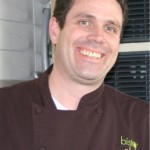By Diane Carman
The average American is fat, sedentary, drinks too many sweetened soft drinks, eats too many French fries and knows it all too well.
Most people in the U.S. want to lose weight, said Elizabeth Kealey, a registered dietician and professional research assistant at the Anschutz Health and Wellness Center.
The problem is they just dont know how.
Researchers at the center are testing strategies and documenting results, and while they dont claim to have the obesity cure at their fingertips, they have identified several approaches that appear to work for a significant population that wants to lose weight.
A sense of urgency is driving the research. A recent study forecast that by 2030, 42 percent of Americans will be obese and that the cost of treating them could add $550 billion to health care costs in the next two decades.
The centers approach is not surprising, said Kealey. Moderation and variety those are the cornerstones of a good diet.
Its getting there thats the hard part.
Clinical researchers have found that the secret is baby steps, small changes, she said.
We identify a couple areas that are realistic to each person.
Kealey, who teaches classes in the Colorado Weighprogram, has found that if people are genuinely interested, they can develop healthier lifestyles, lose weight and keep it off. But before they can change their habits, they have to recognize what theyre doing wrong.
Auditing food intake
Most of the time, Kealey starts by evaluating the beverage category in their diets. For some reason, most people dont count liquid calories, whether they arrive via sweetened soft drinks, fruit juices, energy drinks or cocktails.
If you want to lose weight, evaluating beverages is a good place to start, she said. For many people, simply switching from cola or energy drinks to water can make a dramatic difference in daily caloric intake.
The next step is to take a hard-eyed look at portion sizes.
Kealey said one of the exercises she leads in her classes is to have participants serve themselves portions of breakfast cereals, fruit juice or other foods and then measure or weigh them. Its a fun exercise, she said, because people usually are amazed at what the recommended portion size of, say, granola is compared to the usually much more generous portion theyve poured.
I always get a lot of comments on that lesson, she said.
She also works with participants to help them improve their overall diets by including at least five and optimally nine servings of fruits and vegetables a day while reducing fats, starches and sweet treats.
The goal is to prepare or purchase foods that are satisfying and taste good, but are nutritious and not as fat-and-calorie dense as common restaurant or fast-food offerings.
Good taste is key
Bistro Elaia at the Anschutz Health and Wellness Center creates guilt-free foods that focus on flavor.
Kealey and other nutrition researchers worked with the staff from Bistro Elaia at the Health and Wellness Center to develop menus and adapt recipes to encourage healthier eating and enable Colorado Weigh participants and others to enjoy eating and still achieve their weight-loss goals.
We offer food in three different categories: ultra healthy, healthy and healthier (than the usual alternatives), said Paolo Neville, executive chef at the caf located on the first floor of the center.
We started with the concept that the food has to really taste great, he said. It has to be addicting. It shouldnt have the stigma of being health food.
Some of the guidelines were to reduce fat (There are no fryers here, Neville said.), reduce salt, adjust portion sizes away from the supersized servings that have become common in restaurants, and put the emphasis on organic grains, vegetables, fruits and plenty of seasonings.
The bistro also clearly posts calorie counts for everything on the menu. Were all about transparency here, the chef said.
One example is the popular chicken corn chowder (238 calories per bowl). Neville said he purees some of the vegetables and stirs in fat-free yogurt at the end to give it the creamy taste and texture people love without using heavy cream, or thickeners like flour and butter.
For sandwiches, he said, they shopped around to find whole-grain breads that werent too high in calories to give us some breathing room for the fillings. Then he revised classic recipes for aioli, using the typical olive oil and egg yolks as a base, but punching up the seasonings and flavorings so we dont have to put so much on the sandwich.
With something like the for fromage sandwich, they used stronger cheeses, like blue cheese and goat cheese. We cut the amount of cheese on the sandwich by close to half without sacrificing flavor. It weighs in at 490 calories.
Breakfast items also feature plenty of vegetables. The Egg White Shuffle has spinach, dried tomatoes and feta cheese with egg whites on a whole-wheat English muffin and tops out at 264 calories.
Since the bistro opened last month, Neville said the response has been fantastic. Weve been doing very, very well.
Bistro Elaias catering business has been operating for several months and appeals to businesses and organizations that want to encourage healthy eating among their employees and clients, director Carrie Cohen said.
Carrie T. Cohen, Bistro Elaia restaurant manager and catering director
One of the events they catered was a lunch for executives from McDonalds, which helps fund the center. On the menu were chicken Provencal, salad and carrot cake.
They loved it, she said. Everybody always asks what we served the McDonalds people.
Diet alone not enough
Along with encouraging greater awareness of what participants are eating, the Colorado Weigh program emphasizes regular physical activity. Its not just diet alone, said Kealey. Its the physical activity piece, the biological piece, the motivational piece.
For Maureen Ediger, director of external affairs for the School of Public Affairs at the University of Colorado Denver, the 12-week program has been eye-opening.
Its nothing radical. Theres nothing you cant eat, she said. Its a matter of adjusting portions and writing down everything.
The simple task of keeping a log of everything she eats and all her activities each day (recorded on a pedometer she wears) provides an incentive and a level of accountability she didnt have in the past.
It also has given her a sense of accomplishment.
When life at work or at home with her husband and four children feels overwhelming, focusing on her own health feels great, she said. Its one part of my life that I can control.
Its a matter of making little choices throughout the day. Thats why its working.
One example of a little change that has a big impact is her new coffee routine.
Ive always liked coffee with half and half, Ediger said. Now I drink it with skim milk or black. Once I realized how much fat and calories I was consuming in that daily habit alone, I started making a different choice. Now I think if I tried to drink coffee with half and half, it would be disgusting to me.
All of the recommendations in the Colorado Weigh program are based on the latest research on obesity. Kealey said the program was developed by James O. Hill, director of the Center on Human Nutrition at the Health and Wellness Center; Dr. Holly Wyatt, a specialist in internal medicine; and Assistant Professor Bonnie Jortberg, a dietician at the University of Colorado School of Medicine.
Participants set goals for increasing their activity levels through walking, biking, dancing or any way they choose.
I cant get an hour out of my day for a workout, Ediger said, but I can take 20 minutes in the morning, I take the stairs throughout the day at work and then do another 20 minutes of exercise in the evening.
She tries to incorporate activity into other parts of her life, choosing to run an errand on her bike instead of in her car and to get the kids involved in fun runs, hikes and cycling outings on weekends.
All these new habits really benefit the whole family, Ediger said.
Among the recent findings included in the program is research that suggests while a daily workout routine or as health officials recommend, a 30-minute walk five times a week is good, those activities may not be enough to counteract the damaging impact of spending eight hours a day sitting at a desk. A recent study found the risk of cardiovascular disease is 64 percent higher among men who spend more than 23 hours a week in sedentary activity (not including sleep) compared to those who spend 11 hours or less per week sitting.
Its not necessary to spend eight hours a day at the gym, Kealey said, but we all need to get up and move, not just sit.
Results from the participants in the Colorado Weigh program are used for the studies on weight loss and obesity at the Health and Wellness Center. While the weight loss goal in the 12-week program is 8 percent, Kealey said that average weight loss for participants is 6 to 7 percent. Edigers weight loss in the program was 10 percent.
Follow-up on weight maintenance under Colorado Weigh is less thorough. However, a different database used at the center tracks people who have lost 30 pounds or more and kept it off for at least one year. The National Weight Control Registry tracks more than 5,000 people who meet those criteria. The average weight loss among them is 66 pounds.
Kealey said research on weight loss, nutrition and general fitness is an increasingly important field in health care, where the CDC estimated in 2008 that the annual cost for obesity-related conditions was $147 billion.
We have a long way to go, but there is evidence that making those small changes, realistic changes is the key. We know if you make your expectations too large, you wont succeed.



